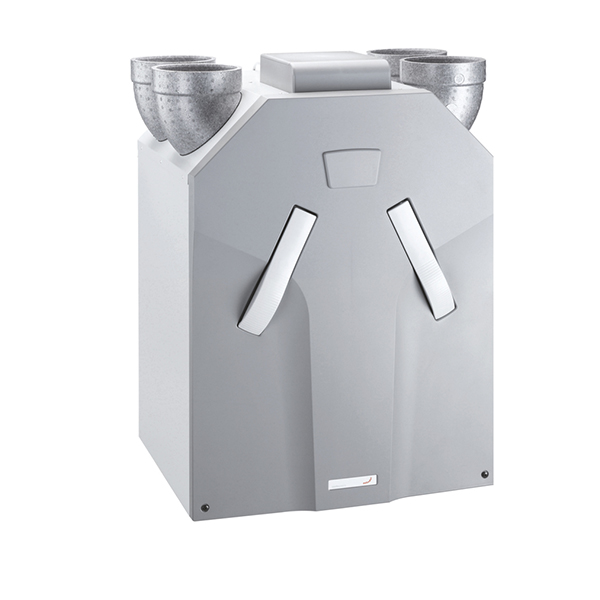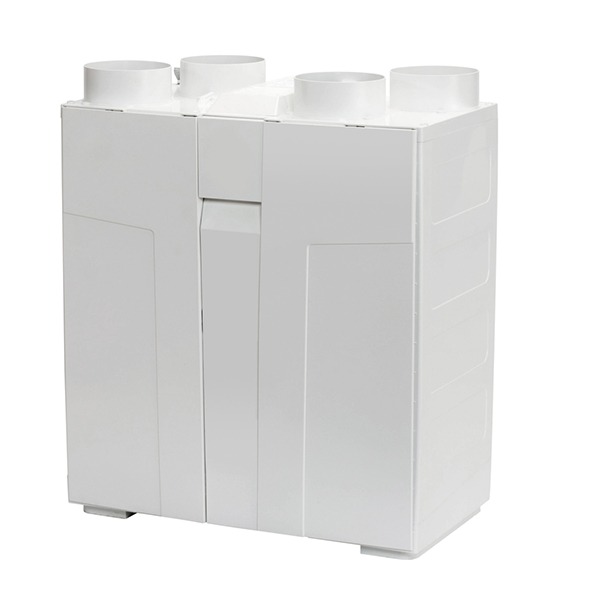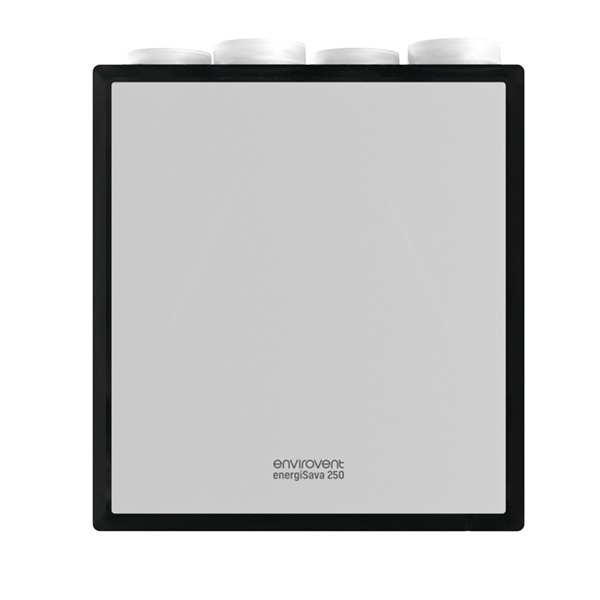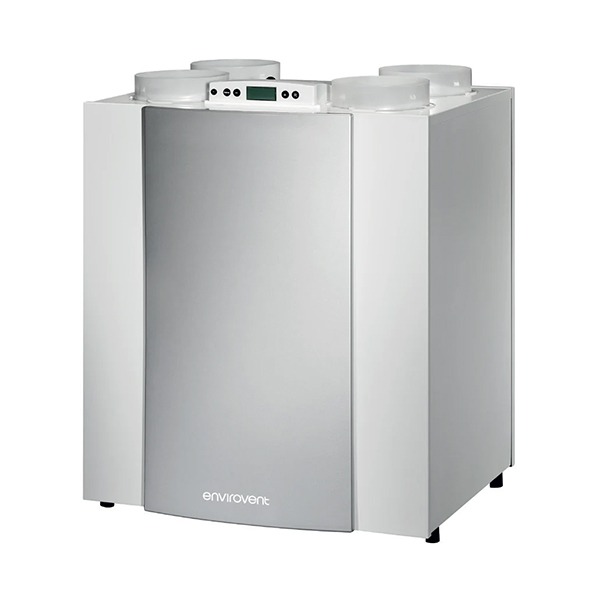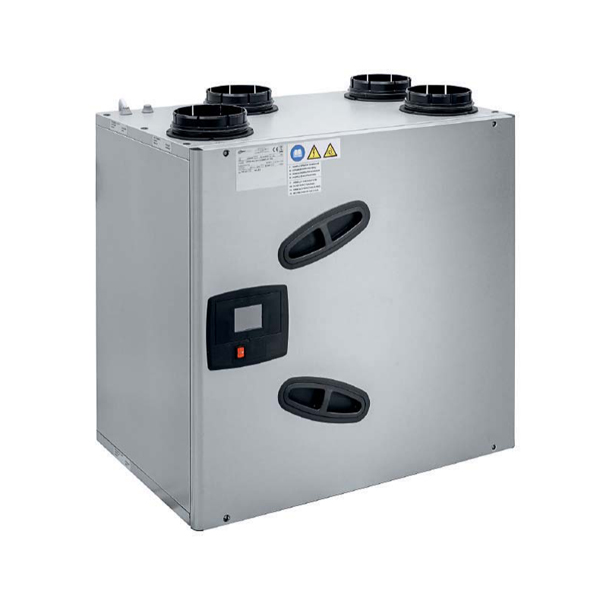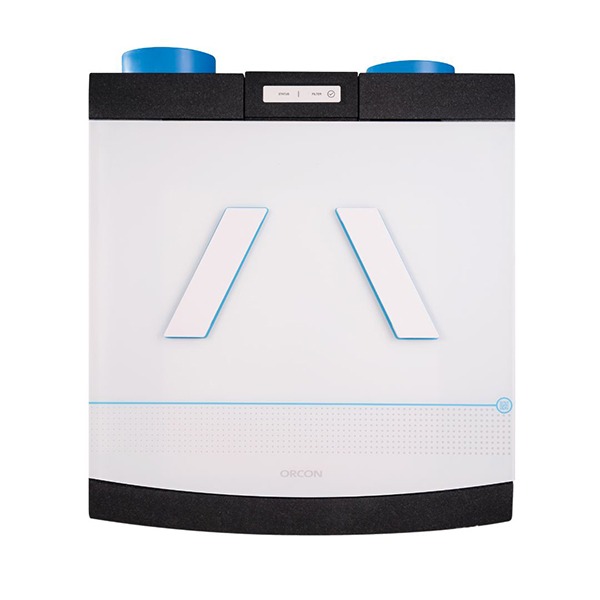Heat Recovery Ventilation Units (MVHR)
With homes becoming more airtight through efficiency measures such as insulation, draught- proofing and better quality windows, a lack of natural ventilation means that moisture created from everyday activities such as cooking, washing and even breathing remains in the home.
With nowhere to go, this moisture collects on cold surfaces such as windows and inside walls and causes condensation, damp and mould growth, all of which contribute to poor indoor air quality (IAQ).
Mechanical Ventilation with Heat Recovery is the solution to all these problems. MVHR systems are designed to provide a continuous supply of fresh, filtered air to a building while also recovering the heat from the stale air that is being extracted. Heat recovery systems typically recover about 90-95% of the heat in the exhaust air thereby improving the energy efficiency of buildings.
MVHR is the ideal choice when:
- You are doing a full renovation or building a new house.
- You require a whole house ventilation solution.
- You want to make your home energy efficient.
- You require a solution to condensation and mould issues
- You are building a very airtight house
- You are concerned with allergies, hay fever etc and require filtered incoming air.
Benefits of MVHR Systems for Homes
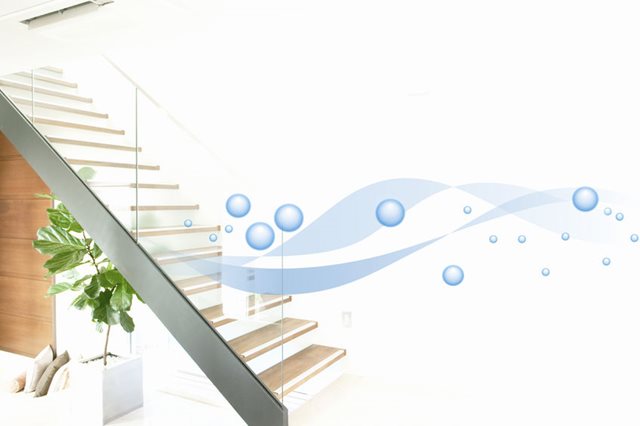
Improved Indoor Air Quality
Maintain a healthy & comfortable indoor environment inside your house free from stale air and pollutants. Helps control humidity, VOC’s and odours within your home.

Superior Comfort
No matter what the weather is on the outside, you can maintain a comfortable indoor
temperature by recirculating the warm air that is being extracted from the building.
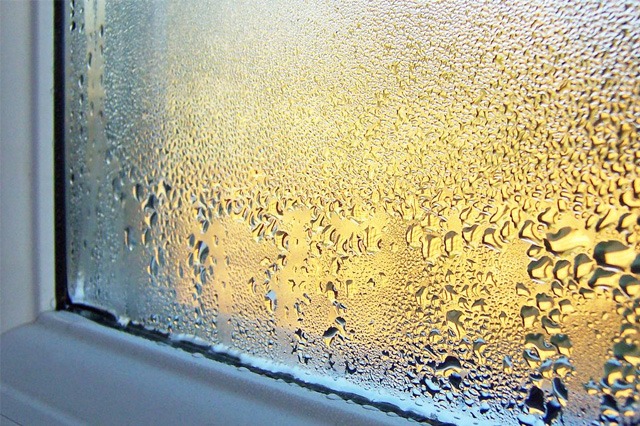
Eliminates Condensation & Mould
Control moisture levels inside the building by extracting moisture-laden air from kitchens and bathrooms, reducing the risk of condensation and dampness.
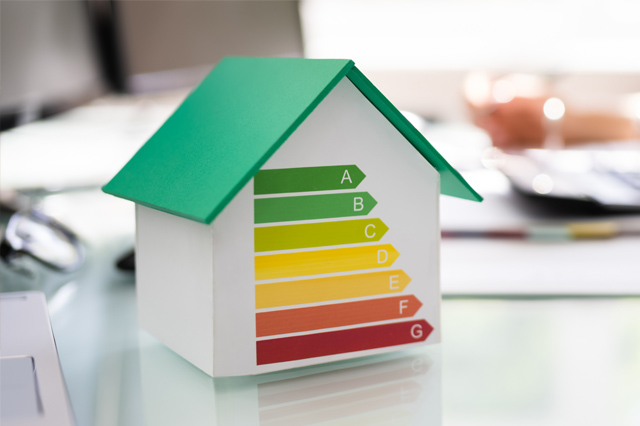
Improves Energy Efficiency
Reduce your energy consumption by recovering heat that would otherwise be lost through ventilation. By recirculating the warm air, less energy is required to heat the incoming air, leading to lower heating bills.
Our Product Range
How do MVHR Systems Work?

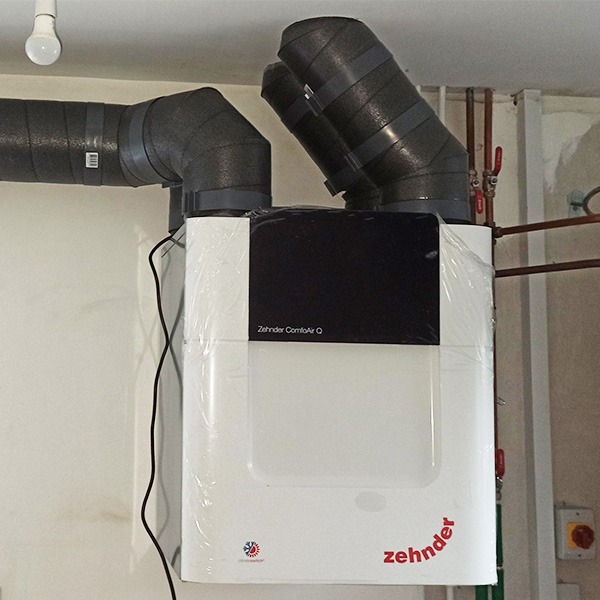
Why Choose Flynn Heat Recovery Systems?
At Flynn Heat Recovery Systems, we are committed to providing our customers with the highest quality MVHR systems and services. Our team of experienced engineers will work closely with you to design and install a bespoke heat recovery unit that meets your specific requirements. Over the years, we have installed heat recovery units in several new builds and retrofitted into existing homes.
We use only the most reliable and energy-efficient brands, ensuring that you get the best value for your money. Our after-sales service is second to none, and we offer regular maintenance and servicing to ensure that your system continues to operate at peak efficiency.
If you’re looking for a reliable and experienced provider of MVHR systems in Ireland, look no further than Flynn Heat Recovery Systems. Contact us today to discuss your requirements and find out how we can help you achieve a more sustainable and energy-efficient home or business.
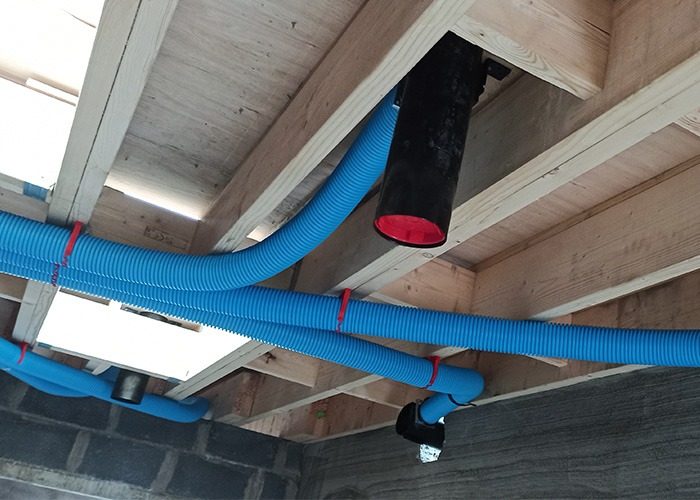
We're here to help! Get in Touch Today!
Frequently Asked Questions
How does it recover heat from outgoing stale air?
For example, in winter, the stale air inside the house is 21°C while the outside air is approximately 5°C. To avoid constantly filling the house with cold air, a HRV system is utilized. The stale air is first sent over a heat exchanger before being discharged outside.
This causes the heat exchanger to increase in temperature to 20°C.
The fresh air, which is at 5°C, is then passed through the other side of the heat exchanger without mixing with the outgoing stale air. As a result, the incoming fresh air rises to 19°C before it is blown throughout the house. This system helps to maintain a comfortable temperature inside the house and avoids the need for the radiators to heat up the cold outside air.
Is MVHR suitable for all types of properties?
Whether your project is a new build, retrofit, renovation or you are updating a property, ventilation can be installed to any project!
It is common to hear that heat recovery does not work in older buildings, but this is not the case. It will still work but you may not get the highest efficiency from a system as you would if it were installed in a new home, but it is still a worthwhile and beneficial system.
Can a MVHR system be retrofitted into an existing property?
Yes. Retrofitting the system into a single storey house is usually no problem but it is more difficult in two storey houses unless considerable renovation work is also being undertaken. However it is important to ensure the house is sufficiently air tight to warrant the spend. If not, Demand Controlled ventilation may be the more appropriate system.
Will MVHR heat my home?
MVHR systems are designed to provide ventilation and improve indoor air quality in a building. While they can recover and reuse heat from the outgoing stale air, they are not designed to be the primary source of heating for a home.
Instead, MVHR systems work in conjunction with a heating system, such as a boiler or heat pump, to help maintain a comfortable temperature inside the home. By recovering heat from the outgoing air and transferring it to the incoming fresh air, the MVHR system can help reduce the amount of energy needed to heat the home.
Where is an MVHR system installed?
An MVHR system is usually around the size of a large boiler and has four ducts – two running outside and two for internal extract and supply, as well as pipework that connects each of your rooms to the system. It can be wall-mounted in a utility room or loft space.
How noisy / quiet is an MVHR system?
The noise level of an MVHR System depends on several factors, such as the type of unit, the size of the property, and the location of the unit.
In general, MVHR systems are designed to operate at a low noise level to minimize any disturbance to the occupants of the property. Most modern MVHR systems are equipped with low-noise fans and are insulated to further reduce noise levels.
Correct sizing of the system is essential to keep noise to a minimum. An undersized unit running at higher speeds will contribute more noise to the building. It is also important to use a quality, correctly sized ducting system to reduce the noise levels. Slow moving air throughout the ducting system will generate less sound.
Can I open the windows with MVHR installed?
Yes, you can open the windows in a property with an MVHR (Mechanical Ventilation with Heat Recovery) system installed. The MVHR system is designed to work in conjunction with natural ventilation to help maintain good indoor air quality.
However, it’s important to note that opening the windows for extended periods may reduce the efficiency of the MVHR system. This is because the system is designed to control the flow of air in and out of the property to optimize heat recovery and ventilation. When windows are open, the MVHR system will still operate, but it will be unable to maintain the desired level of air quality and temperature.
What sort of ducting is used?
We generally use a manifold ducting system using semi-rigid ducting as it’s more durable and has a longer lifespan. We also use small amounts of acoustic flexible duct, which reduce the sound of the machine entering the ducting system in strategic areas like connections to the fan unit. It is essential to use insulated ducting between the unit and the outdoor vents where the air is taken in and discharged through. This reduces cold bridging, condensation within the ducting and water vapour forming on the outside of the ducting.
Is there any maintenance?
Apart from keeping all the air vents clear and clean, the only maintenance is periodic filter changes. There are several filters which need to be changed to keep the air flowing properly. How frequently depends on where you live and how clean the air is. The filters keep your air clean, but are also needed to keep the system working properly. The kitchen extract filter may need changing/ cleaning more often than the others. Normally filters need to be changed every 12 months.
How much does it cost to run?
Even though an MVHR system should be left on all the time, the fans are powered by low energy motors. Depending on the size of property the annual cost will be around €80 to €100 a year which will be significantly outweighed by the savings made in heating costs for the home.


